
RETURN TO HOME PAGE
FEEDBACK
 |
April 2011 RETURN TO HOME PAGE FEEDBACK |
By Corrie M. Anders
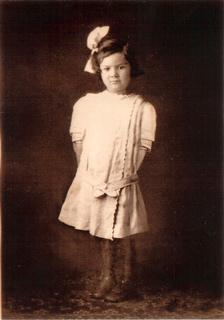
Dorothy Noe, a great-granddaughter of Jose de Jesus Noe, spent most of her girlhood in Oakland, but she always recalled her dramatic first year in San Francisco. Photos courtesy Louise Umbarger.
As the chaos of the 1906 earthquake raged around her—rampant fires, disintegrating buildings, the cries of the injured—a young mother had a more pressing concern than mere survival.
On that dark April 18 morning in San Francisco, she searched for a man of the cloth, one who would give her infant daughter the sacrament of baptism.
Her 7-month-old child was heir to one of the most famous names in San Francisco’s early history. A priest, interrupted from his earthquake ministrations, grudgingly baptized her—no doubt unaware that she was a descendant of Jose de Jesus Noe, a land baron and the city’s last alcalde, or mayor, under Mexican rule.
From that day forward, the child, Dorothy Angela Noe, was indeed blessed. She grew up and got married, raised two children, and enjoyed good health throughout her golden years. On Nov. 24, 2010, Dorothy Noe Buhler died peacefully at the magnificent age of 105.
“She passed away at her home” in Portland, Ore., said Louise Umbarger, Buhler’s daughter.
Umbarger recently wrote the Voice to share her mother’s story.
She said her mother was proud, but not boastful, of the pedigree that connected her to a man who in the mid-19th century owned a vast tract of rural land in San Francisco. The spread was so large it encompassed the present-day neighborhoods of Noe Valley, Glen Park, the Castro, Twin Peaks, Sunnyside, and West Portal.
“We knew we were related to Jose de Jesus Noe. We’ve always thought that was really neat as kids,” Umbarger said, “but our family never bragged.”
Jose de Jesus Noe was born in Puebla, Mexico, in 1805. He immigrated to Alta California and settled in what was then called Yerba Buena in 1840. He served as mayor of the town for a short time, but relinquished his post when U.S. soldiers marched in and took over in 1846.
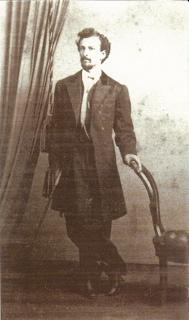
Dorothy’s grandfather, Jose Vicente Gabriel Noe (above), was the son of Jose de Jesus Noe, for whom Noe Valley is named.
Umbarger said her family’s Mexican heritage showed up in the stories her mother passed down, as well as in a small collection of family heirlooms. The keepsakes included a single sterling napkin ring engraved with the name of her grandfather, silver flatware imprinted with the family’s “N,” and some fine period lace.
The Noe lineage ran from Jose de Jesus Noe, to his son Jose Vicente Gabriel Noe, to his son Vicente Cayetano Noe, and then to Dorothy Angela Noe (making Dorothy the great-granddaughter of Jose de Jesus Noe).
The baptism that almost didn’t happen was one of Dorothy Buhler’s favorite stories, said Umbarger. Dorothy’s parents, Vicente Cayetano Noe and Lupe Macy Noe, hadn’t gotten around to their daughter’s religious rites before the Great Earthquake hit, at 5:12 a.m. that fateful day.
Lupe Noe was outside standing in the rubble with baby Dorothy when she spotted a priest near their home on Powell Street. She pleaded with him as he was busy providing care and support to quake victims.
“He was very mad at my grandmother [Lupe] that she hadn’t gotten my mom baptized before then,” and that she wanted the ritual carried out in the midst of a conflagration, Umbarger said. “He baptized her extremely fast.”
That accomplished, the family strove to escape the disaster zone and get out of San Francisco as quickly as possible. Their rush to flee the city pushed Dorothy’s uncle to commit a venial crime.
“He stole a horse and buggy and took the family to Oakland,” Umbarger said.
The Noes moved into a rental property the family owned there, and the earthquake refugees never returned to San Francisco as their permanent residence.
Dorothy went to school in the East Bay, as did her brother Everett, who was three years older. In 1926, she graduated from the nursing school at Oakland’s Samuel Merritt Hospital.
Oakland, a city she loved, was not to be her final destination, however. She met and wed Frank Buhler, a hand-tool sales executive of German and Irish extraction, who was transferred to Portland in 1941.
“My mom hated it,” said Umbarger. “She hated the rain,” not to mention being “in a strange city with two little kids in a strange home.”
Dorothy Buhler eventually came to terms with the relocation, and the family settled in Portland for good.
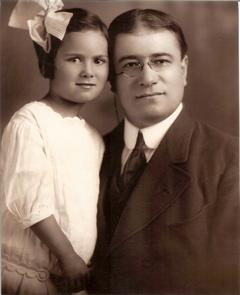
This photo of Dorothy Angela Noe, shown with her father, Vicente Cayetano Noe, was probably taken in the early 1910s.
She lived out the last years of her life, her daughter said, with many of her faculties intact. She drove a car until she was 97 and played bridge until her eyesight started to fail at 101. “She went to bed at two in the morning and got up at 12,” Umbarger said. Dorothy and her late husband leave behind five grandchildren and 13 great-grandchildren.
Umbarger, now 72, worked 15 years as an accountant for Blue Cross Blue Shield insurance company. Her older brother, Gerald Noe Buhler, is a retired computer salesman.
During summer vacations in the 1940s and ’50s, Umbarger and her brother often returned to the Bay Area to visit their grandmother Lupe Noe. She would take her grandchildren to the chapel at San Francisco’s Mission Dolores and the adjacent cemetery where many Noe progeny are interred.
“I was intrigued with it,” Umbarger said. “We walked around the tombstones outside and looked at all the Noes.”
There are indeed markers for Jose Noe’s wife, Guadalupe Gardano Noe, and two of their children. But the lack of any similar memorial for the patriarch of the family has raised questions about the whereabouts of his remains, according to a 2001 article in the Noe Valley Voice, “Neighborhood Historian Sheds New Light on the Image of Jose Noe.”
Still, Umbarger said the family is confident that Jose Noe is buried at Mission Dolores.
“I believe he’s buried there,” she said. “Why would the wife be and not he?”
On their summer visits, there would also be nostalgic trips to familiar haunts, as well as tours through the neighborhoods where Jose de Jesus Noe once owned 4,400 acres of prime land he called Rancho San Miguel. The governor of Mexico granted the hilly grazing land to Noe in 1845/6 to provide expansion for his cattle and sheep operation.
In 1853, five years after his wife died, Noe sold a large swath of Rancho San Miguel to brothers William and John Horner, who soon mapped out the streets of Noe Valley. (The sales price, according to an 1896 San Francisco Examiner story, was $70,000.) Today, the land is home to hundreds of million-dollar homes, most of them built in the aftermath of the 1906 earthquake that chased Umbarger’s grandmother out of San Francisco.
“I wish we still had it,” said Umbarger with a laugh.
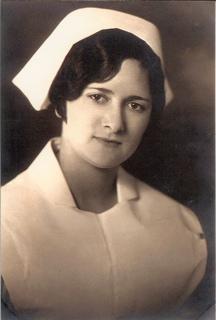
Twenty years after surviving the '06 quake, Dorothy Noe graduated from Samuel Merritt Hospital's School of Nursing.
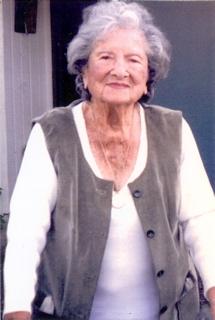
Dorothy Noe Buhler celebrated her 103rd birthday on Sept. 10, 2008. She passed away at her home in Portland, Ore., on Nov. 24, 2010.